Kanha Tiger Reserve
Famous For
Tiger Safari
Special Attraction
Swamp deer
Peak Time
December – April
Best Time To Go
October – April
Nestled in the eastern spur of Maikal range of Satpura mountains, this lush sal and bamboo forests, grassy meadows and numerous ravines all make Kanha a prime tiger habitat. Kanha is among the few most scenic and beautiful wildlife reserves in Asia. This ‘Tiger Country’ is the ideal home for both predator and prey. Spread in an area of 1945 km² (750 square miles), Kanha is one of India’s largest national parks and is renowned not only for its high tiger concentration, but as the last remaining habitat of the hard ground barasingha or swamp deer, which was brought back from the brink of extinction.
The reserve is an excellent interspersion of the dadars (flat hilltops), grassy expanses, dense forests and riverine forests. It is very rich in flora, largely due to the combination of land-forms and soil types, apart from the moist character of the region. The rich habitat diversity of the reserve supports abundant animal communities and the lesser life forms.
Wildlife
Tours to Kanha & Beyond
Things To Do
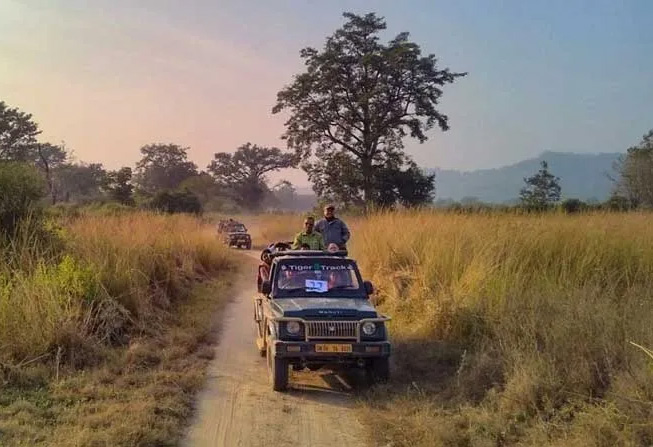
Jeep Safari
There is no better way to venture in to the heart of the forest than by open-top jeep. Safaris within Kanha Tiger Reserve take place twice daily, except on Wednesday afternoons. Morning drives are approximately 5 hours, commencing at sunrise and returning to lodge by 11.15am. A picnic breakfast is taken on-board to enjoy out in the forest. Afternoon safaris are up to 3 hours, commencing at 2.45pm (later in summer months), returning to camp at sundown. We recommend a minimum of 4 jeep safaris to give yourself a fair chance of sighting tiger while taking in the full diversity that Kanha has to offer.
Nature walk
A walk through the forest down to the beautiful Banjaar river, listening to bird call and the silence is an experience not to be missed. From the lodge you gradually enter the tall sal forest, following leaf-littered trails that have been used for ever. A short walk takes you to the river bank, a natural boundary between the core and buffer forest. Walk further downstream observing an array of striking butterflies and dragonflies, interesting tree structures that support ant nests, beehives and enormous spider-webs stretched between their branches. The trail crosses several wooden bridges and as you penetrate deeper, you may follow large pugmarks or come across fresh leopard scat. Wild dog and even tiger has been seen here, on foot.
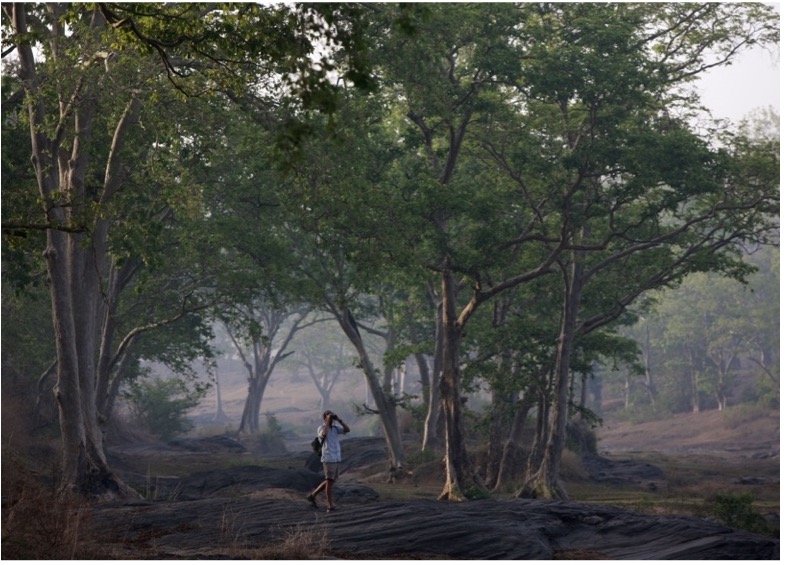
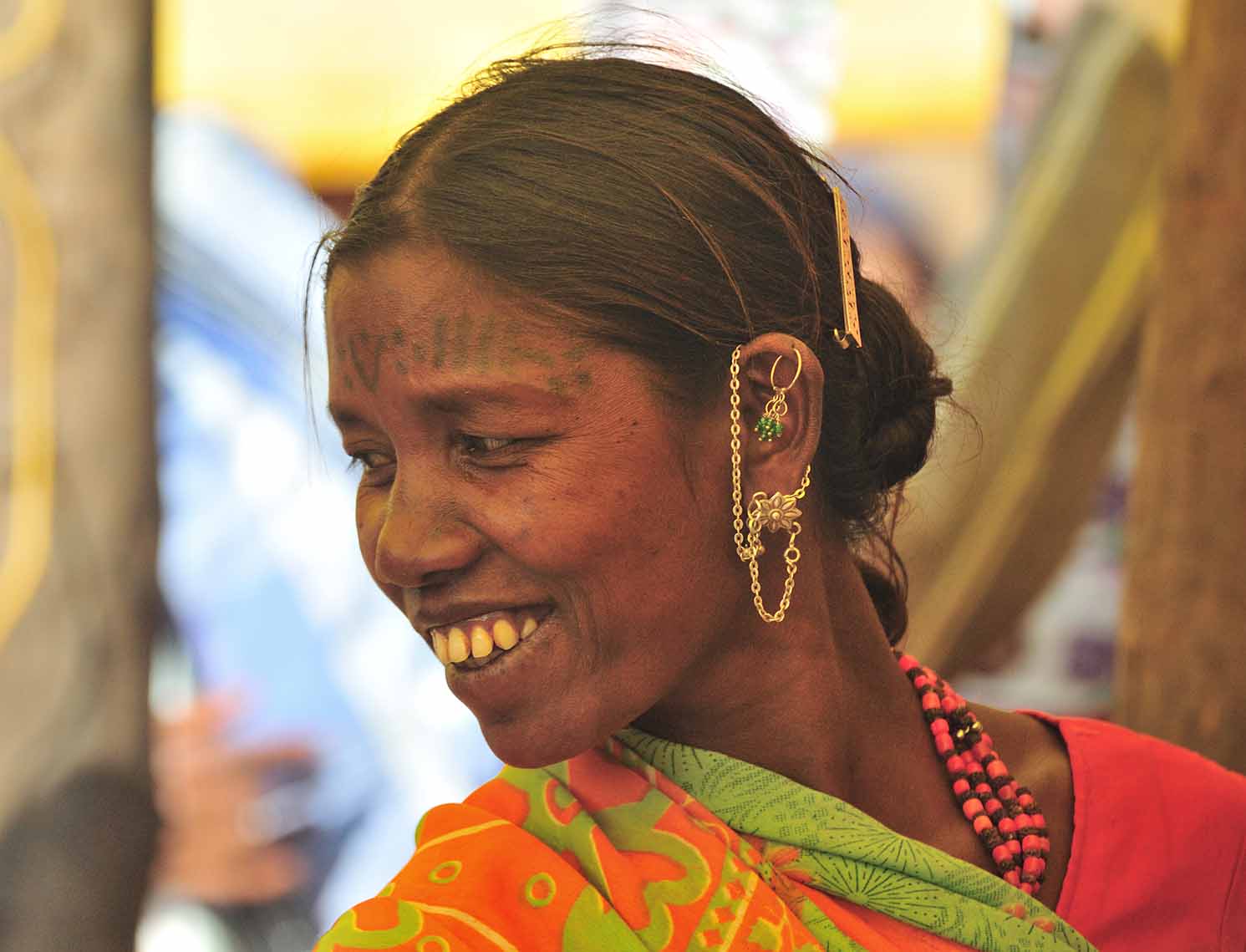
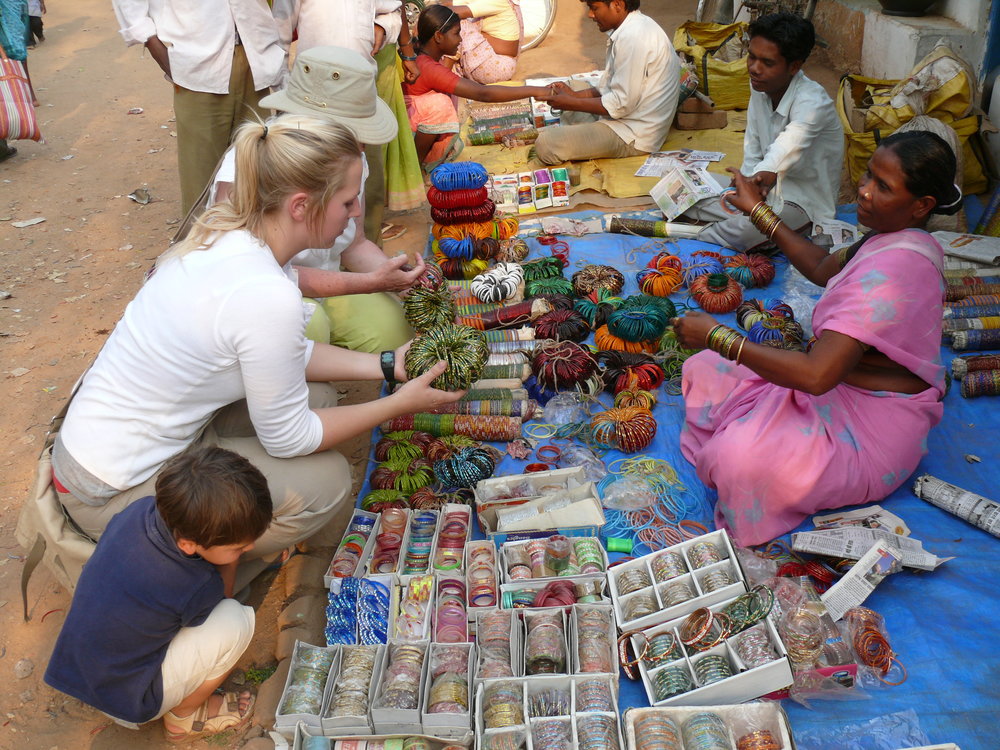
Visit to Baiga villages and markets
Kanha’s people are predominantly Gond and Baiga tribes – the original forest dwellers of central India, peaceful and animistic in their beliefs. They reside in blue-washed settlements which are beautifully integrated with the surrounding forest.
One of our team member can take you on a humbling walk through their village where, you can witness the various stages of the labour intensive rice harvest, a mud house under construction, or drop in to the village school. You’ll admire the practical but aesthetic design of their homes, hand-shaped to complement their agrarian lifestyle, with wood stocks and hay piles, the grinding room and grain store for a year’s supply of rice, wheat and mustard, The welcoming gate-house accommodates buffalo, pigs, goats and cows and opens in to the courtyard – a shaded social space, sometimes host to a wedding or baby naming ceremony.
Bustling weekly markets are fascinating to experience as they have barely changed for centuries. Soak up the atmosphere at the chai stall, or even go for your smoothest ever shave in the most unique salon – under the shade of a tree….Goods for sale serve entirely local needs: fish and vegetables, agricultural tools, cooking utensils and water pots, but there are some items that might interest you too: silver tribal jewellery, glass bangles, a colourful sari, fresh spices or a hunk of jaggery. Some like to pick up a brass water pot for an indoor plant back home. Either way, it’s a local’s market and you’ll experience life around here as it truly is.
Cycling
The rural countryside that surrounds us is absolutely idyllic, and the best way to soak up the gentle pace of life is to ride out on one of our cycles and explore!
Country lanes weave between each village where you find clusters of charming houses moulded out of earth and painted sky-blue. The surrounding rice fields are verdant in October, having grown throughout the monsoon season and almost ready to harvest. The harvesting process: cutting, winnowing, threshing and gathering is intense and fascinating to witness. Around the same time, fields of brilliant yellow mustard will appear. By Spring (Feb-March) the rice season is complete and the forest blooms. The Mahua flower is collected and brewed into a strong country liquor devoured throughout the community. Marriage celebrations commence.
We have a hand-drawn map to help guide you through some of the loveliest villages, allowing you to go at your own pace and distance. You can stop for chai at one of the stalls, or we can pack you a thermos in the panniers if you’d prefer to halt under the shade of a tree, and be lulled by the sound of cow bells and gentle chatter.


Full day photographer’s safari
A full day ‘photographer’s’ permit allows easier access to different areas of the reserve and can be organised at a premium rate. Special permission is granted for up to 3 people per jeep. Safaris commence 30 minutes before sunrise up till 30 minutes after sundown. A full day permit can be combined with a three-hour elephant safari. Please contact us for full day rates and more details.
Best time to visit
Like most national parks in India, Kanha is closed from July to September for monsoon. While the core zone of the park may be closed down during the heavy rainfall and decreased accessibility, but buffer zone is open for the visitors to witness the monsoon season playing a crucial role in sustaining and reviving the ecosystem of this place.
Kanha reopens for safaris in October after a three-month closure for the monsoon. The forest is lush and vibrant, with clear streams flowing through it. Though humidity is high, the air is fresh and clean. Large herds of spotted deer and barasingha are frequently seen during this period, making it an excellent time for wildlife and landscape photography. The animals’ newly gleaming coats contrast beautifully with the vivid green surroundings, creating stunning visual scenes.
Most visitors come Nov-Mar, when the days are warm (mid 20°Cs). The meadows during the winter are usually teeming with barasinghas, with plenty of tiger activity around the fringes and vegetation starting to die back which improves visibility, but be prepared for cold mornings in Dec-Jan.
For tiger tracking, the ideal time to visit Kanha National Park is between April and mid June, when the vegetation is dry and sparse, and wildlife gathers around the limited waterholes. Be prepared for daytime temperatures that can soar into the 40°Cs, though the nights are cooler. Most photographers in search of big cats prefer this time due to high chances of sightings. Mid June onwards, one can expect pre monsoon showers.
Location
Destinations Nearby
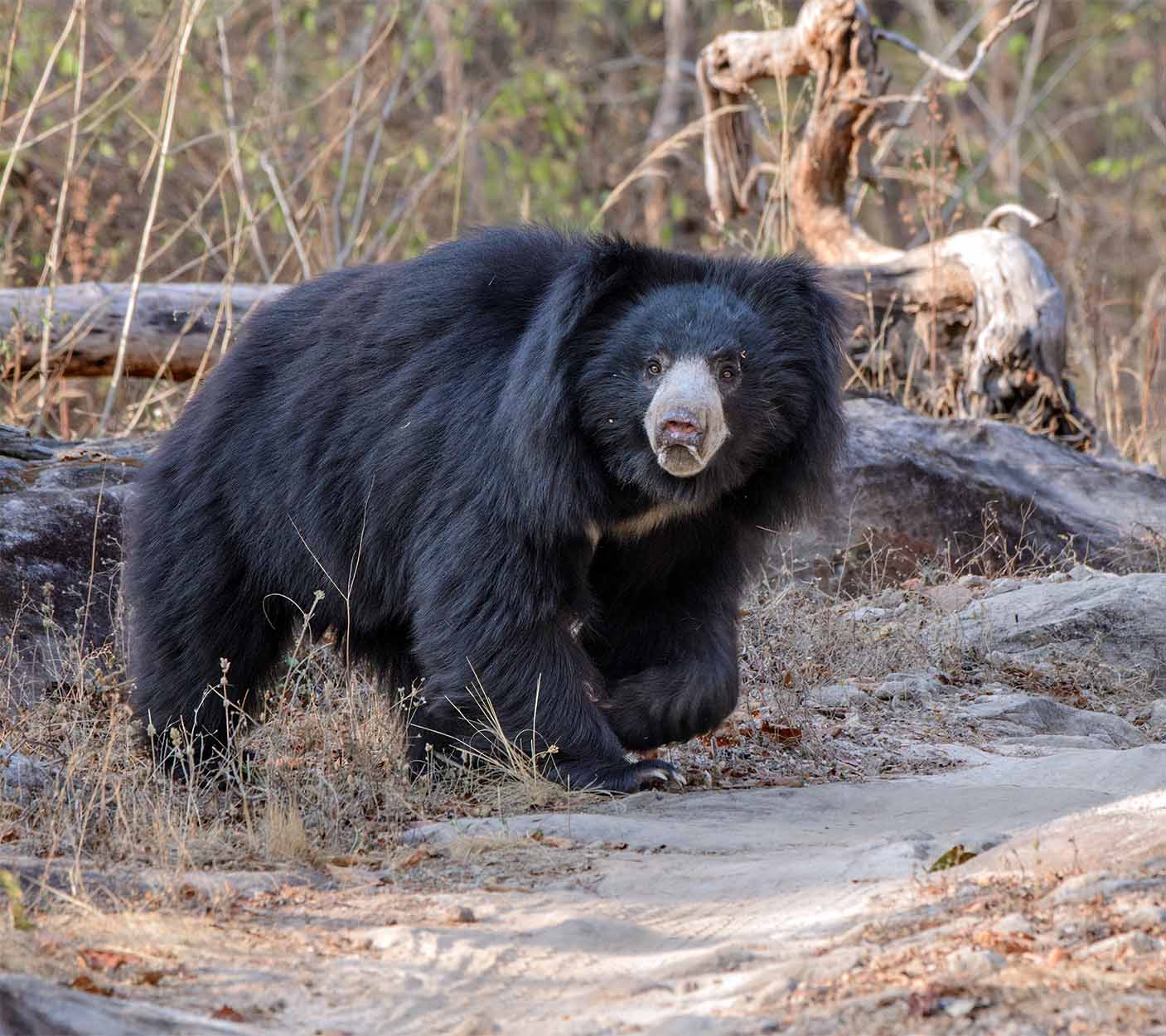
Satpura
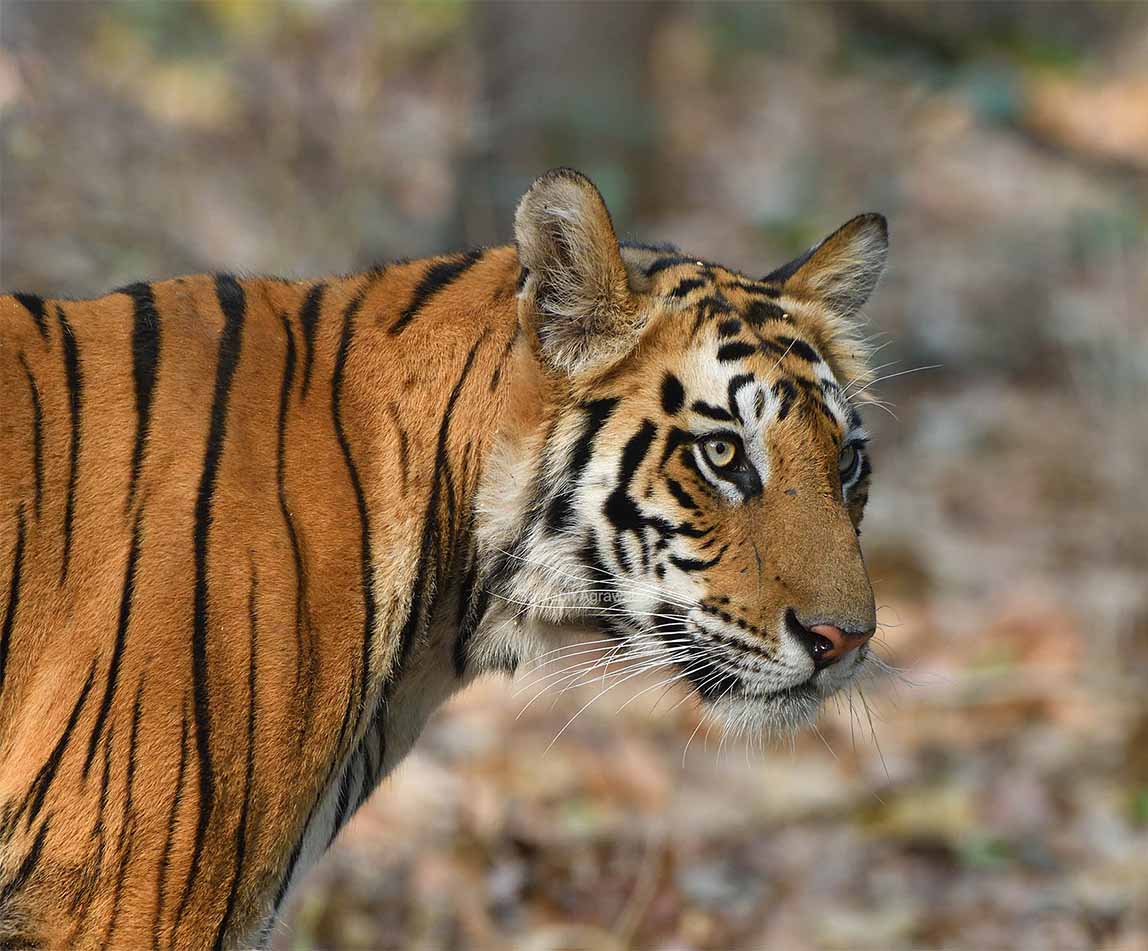
Tadoba

Pench

